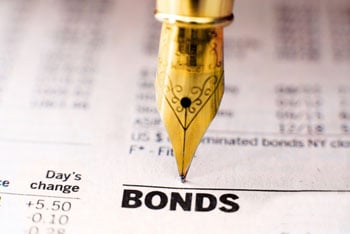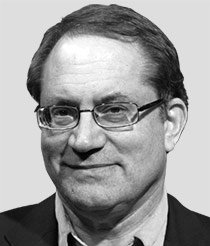The high‐yield bond area has been a Petri dish for misapplied financial theories and assumptions for years.
High-yield bonds are properly understood as hybrid securities that possess the characteristics of both debt and equity. Yet most investors in this asset class focus on the "spread" at which a bond trades. The spread is the number of basis points (1/100th of a percentage point) above a benchmark yield at which a bond trades. In the case of high-yield bonds, Treasury bonds are considered the benchmark on the basis that they are riskless securities (an assumption that itself is questionable in view of the United States' increasingly precarious fiscal posture). Spread represents the risk premium that investors demand for owning a security that is riskier than a Treasury bond.
Don't Miss: This Looks Like the Setup for a Bond Bloodbath
And, as a method of measuring risk, it's all wrong.
Here's why (and how to stay out of the trap)...
The "Spread" Measurement Virtually Assures Investors of a Bad Outcome
 There are two serious problems with using spread to measure risk for high-yield bonds.
There are two serious problems with using spread to measure risk for high-yield bonds.
First, it's the wrong benchmark.
Conceding for the sake of argument that Treasury securities are riskless in the sense that their repayment by the U.S. government is assured, their interest rates have been kept artificially low since the early 1990s by procyclical Federal Reserve policy. This phenomenon intensified after the Fed lowered the federal funds rate to zero during the financial crisis and kept it there for seven years while also engaging in several rounds of quantitative easing, policies that distorted interest rates beyond recognition.
These low rates are signs that all is not well in the economy, a condition that adds further risk to high-yield bond investments that are generally highly sensitive to economic conditions.
In periods when interest rates have been extremely low, these low rates have generally been indicative of economic weakness, not strength. Accordingly, high-yield bond investors have been grossly underpaid for the risks they are assuming.
Second, spread is simply the wrong tool to measure risk. It is a fixed-income measurement and high-yield bonds are not simple fixed-income instruments; they contain a significant component of equity risk (that far too many investors have swallowed firsthand, to their dismay). The market is applying a tool designed to measure fixed-income risk to what is in large part an equity security.
This is particularly true with respect to lower rated bonds (bonds rated Ba1/BB or lower by Standard & Poor's and Moody's). Lower rated bonds are extremely risky and are really not fixed-income instruments at all; they are best described as "equities in disguise" or "equities with a coupon." In fact, these bonds always end up trading at equity‐like yields (which translates into much lower prices and very high yields) when the market recognizes their subordinated, equity‐like character.
Combining the wrong benchmark with the wrong tool to measure risk virtually assures investors of a bad outcome. The primary reason spread is used to value high-yield bonds is because it appeals to the quantitative side of the investment universe. Unfortunately, it is an extremely poor tool that continues to be used by investors to their detriment.
The largest high-yield exchange-traded funds (ETFs) are the iShares iBoxx High-Yield Corp Bond ETF (NYSE Arca: HYG), and the SPDR Barclays Capital High-Yield Bond ETF (NYSE Arca: JNK). The largest emerging market ETF by assets under management is the iShares MSCI Emerging Markets ETF (NYSE Arca: EEM).
Rather than pouring money into these vehicles, investors should be running the other way, if not shorting. (As always, I recommend puts as a less risky way to play the short side.) You can lose years of returns in the blink of an eye in a credit sell-off.
Editor's Note: As you navigate 2016's volatile market situation, your most valuable asset may be Michael Lewitt's free Sure Money service. In Sure Money, Michael helps you see what's going up, what's going down, and how to profit. Sign up now by clicking here, and you'll get instant access to all of Michael's investing tips, recommendations, and specific instructions, including his exclusive "Super Crash Report."
Follow Money Morning on Facebook and Twitter.
About the Author
Prominent money manager. Has built top-ranked credit and hedge funds, managed billions for institutional and high-net-worth clients. 29-year career.



